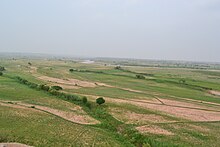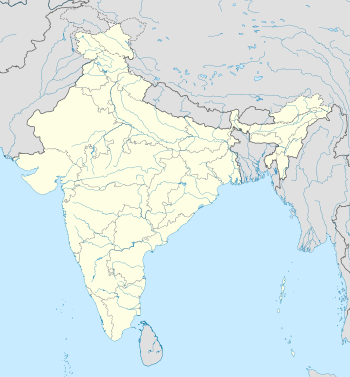Soanian
Jump to navigationJump to search
 |
|
| Geographical range | Indian subcontinent[1] |
|---|---|
| Period | Lower Paleolithic |
| Dates | 500,000 – 125,000 BP[2][3] |
| Type site | Sivalik region[1] |
| Major sites | Sivalik Hills[1] |
| Preceded by | Acheulean |
| Followed by | Mousterian |
The Soanian is an archaeological culture of the Lower Paleolithic in the Sivalik Hills of the Indian subcontinent.[1][4] Contemporary to the Acheulean, it is named after the Soan Valley in Pakistan.[5] Soanian sites are found along the Sivalik region in present-day India, Nepal and Pakistan.[6]
Findings[edit]
Map of the Indian subcontinent showing important sites of the Soanian culture.
The term “Soan Culture” was first used by Hellmut De Terra in 1936,[7] but D. N. Wadia had identified the presence of these archaeological implements in 1928.[8] Further archaeological research was conducted by Stephen Lycett in order to determine the morphometric assessment of the Soanian techno-complex. The result of this experiment concluded that the Soanian techno-complex contains a Mode 3 Levallois technique core component.[4]
At Adiala and Khasala Kalan, about 16 km (9.9 mi) from Rawalpindi terrace on the bend of the river, hundreds of edged pebble tools were discovered. At Chauntra in Himachal Pradesh, hand axes and cleavers were found. Tools up to two million years old have been recovered. In the Soan River Gorge, many fossil bearing rocks are exposed on the surface. 14 million year old fossils of gazelle, rhinoceros, crocodile, giraffe and rodents have been found there. Some of these fossils are on display at the Pakistan Museum of Natural History in Islamabad.
Spread across Shivalik Hills region[edit]
The earliest Paleolithic hominin archaeological site in the Indian subcontinent at the Soan Sakaser Valley,[9] is part of Soanian, sites of are found in the Sivalik Hills of the Indian subcontinent, across what are now India, Pakistan, and Nepal.[6][4][1]
See also[edit]
| The Paleolithic |
|---|
| ↑ Pliocene (before Homo) |
| ↓ Mesolithic |
